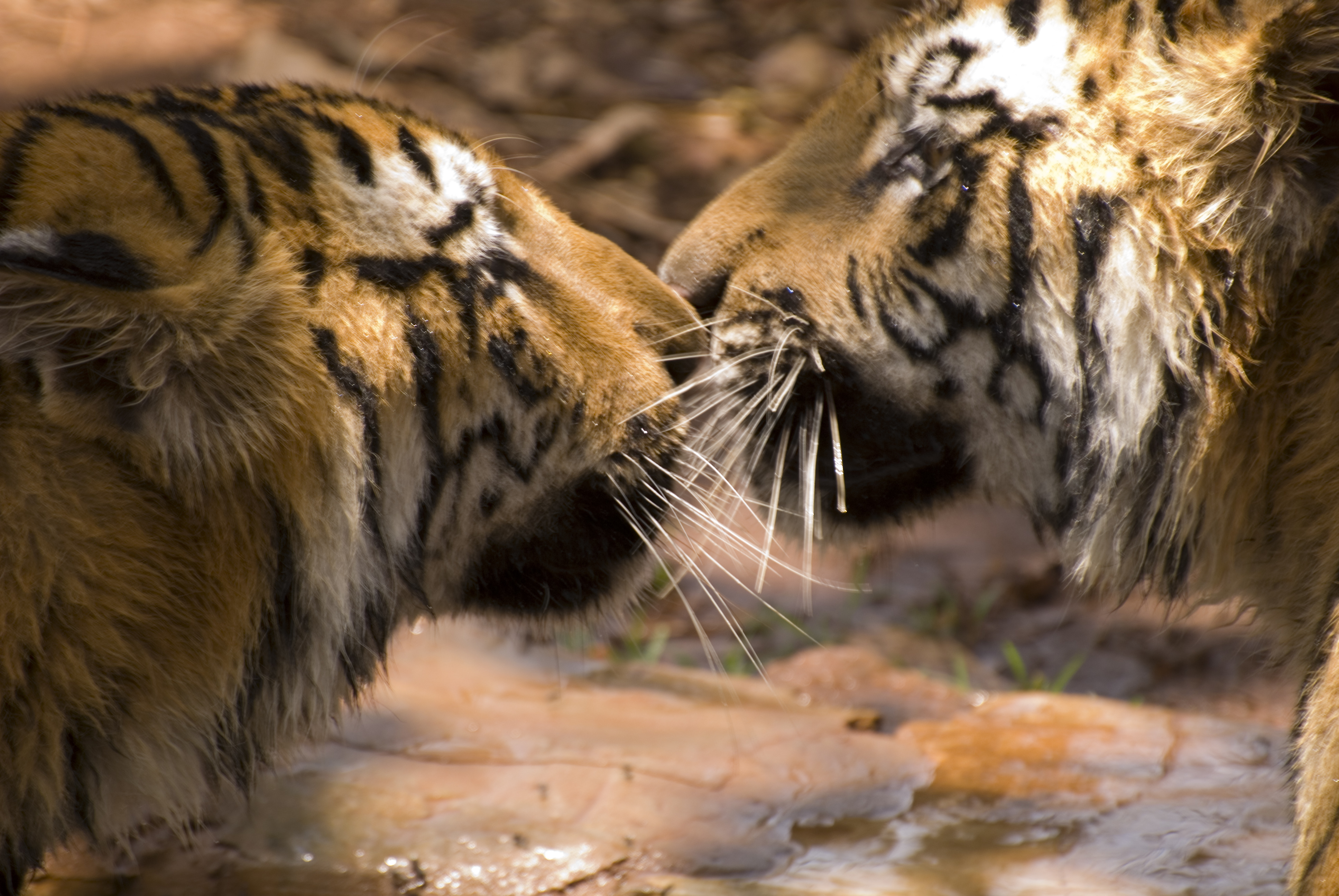
Interactions and Behavior
Bengal tigers are mostly solitary predators and live alone. Both
males and females claim their own individual territories. Mature
females (age 3) tend to live adjacent to their mothers’
territories. The interactions between tigers are very little.
Males and females only interact to mate and sometimes share
their kill. Males interact with other males mainly for
territorial purposes. A male Bengal tiger will not share its’
territory with another male, a fight will be had and the
dominant male will gain the territory. Bengal tigers also
interact very little with other species. Besides killing their
prey, tigers do not often see other predators because Bengal
tigers are relatively inactive during the day.
(Ullas, Karanth K. & et.
2004)
In terms of behavior, communication is a vital
part of a Bengal tiger’s interaction. Bengal tigers use vocal or
sounds, visuals, and scent to communicate to other tigers as well as
other species.
Vocals and Sound: When many people think of
both lions and tigers, the first sound that comes to mind is
roaring. Roaring is not used to signal aggression like many think.
Roaring is used for signaling a tiger’s location. A roar could be to
warn other tigers away or to invite other tigers to the territory.
Growls and hissing are the sounds referring to aggression. Mother
and cub tigers usually communicate through moans. These moans are
also used for signaling location.
(Encyclopedia of Life 2013)
Visuals: In general, Bengal tigers use the same
visuals any house cat would use. For example “when a tiger shows
aggression (an offensive threat) the tail is usually lashed from
side to side, the head is held low, the ears are twisted so that the
backs face forward (showing the ear spots), the eyes are opened
wide, and the mouth is almost closed with the lips forming a
straight line” (Tiger Info
Books, SeaWorld, 14)
Scent: The most common form of communication
through scent is through the use of urine. Similar to dogs, Bengal
tigers urinate in order to mark their specific territory.
Additionally when Bengal tigers greet each other, either a mother
and cub or a male and female about to mate, they rub cheeks and
noses transferring their body scents. By doing so, this demonstrates
a close social bond between the pair.
(Encyclopedia of Life 2013)
Pictured to the left is the rare interaction
between a male and female Bengal tiger. This picture is showing not
only the beginning of mating, but also the exchanging of body scents
between the two.
Read more about the
Endangerment of Panthera tigris
Back to Homepage
